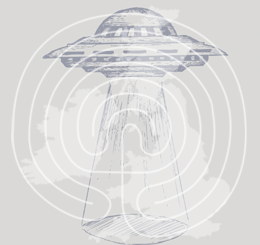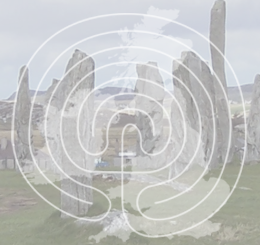Here Be Dragons
The British Isles have some rich Dragon legends that actually play important roles in some of our key folktales and traditions. Chief amongst these would be that of the Welsh Dragons and of course Englands St George and the Dragon. What other dragons have we got and what exactly were they, monsters or myths?
The British Isles have some rich Dragon legends that actually play important roles in some of our key folktales and traditions. Chief amongst these would be that of the Welsh Dragons and of course Englands St George and the Dragon. What other dragons have we got and what exactly were they, monsters or myths?




Dragons
How about some Scottish Dragons?
St Serf seemed to have made quite a living from killing dragons. He is reported to have killed at least two dragons. One at Dunning in Strathearn, and one at Dragon’s Cave at Kinnoul Hill near Perth, which was celebrated at Beltane up until the Reformation! The Pittempton Dragon is yet another one, killed by a man called Martin (see my thread ). A very impressive statue sits inDundee city centre commemorating the local legend. The legendary Scottish warlock and mystic, Michael Scott had, at the beginning of his tale, killed and eaten a great white serpent, which could possibly be taken as a dragon.
The of course, in Perthshire again, on the banks of Loch Tay there is the infamous cave of Caer Bannon, wherein lurks the legendary Black Beast of Aaaargh!
With regards to dragons… Personally I believe them to be interpretations of dinosaur bones. The world didn’t live in a vacuum even back then, and people were very much in contact with each other, so it’s not difficult for stories to spread over the land. I know that on the Unexplained Mysteries forum there is one man who keeps insisting that dragons were actually Biblical creatures, the servents of God; eventually becoming our modern interpretation of angels. He insists that it all comes from a misinterpretation of Hebrew words upon translation, and this is why we have villified them… or something… Personally I don’t believe this.
Scottish Dragons
I think your probably right Urisk and they are related to our ancestors trying to explain away dinosaur bones, fossilised foot prints etc. I never realsied there were so many Scottish dragon tales though. I think we need to update the website with some.
Dragons
I think it may probably have older links.
Everybody knows the history of St. George slaying the dragon but we can go even farther. The Egyptians had Ra battling Apophis (represented as a huge snake), the Greeks Apollo slaying the mighty Python with a single arrow, the Babylonians had the creator god, Marduk, slaying the cosmic dragon Tiamat and using her body to fashion the earth and the sky.
Three classic well known cases.
Three sky gods defeating snakes or dragons.
It could possibly represent the newly arrived, warlike invaders (who worshiped sky and sun gods) defeating the aboriginal inhabitants of the land (who are supposed to have worshiped "earthly" gods, among which the conquerors chose the least agreeable to represent evil).
We know that the original inhabitants of Europe had a sophisticated religion, which comprised many "weird cults" (by modern standards of course). One of this was undoubtely a snake cult: it has left traces in many archeological sites, for example the palaces at Cnossus (Crete), and in some bizzare snake-related festivities still surving in parts of Peninsular Italy and the Balkans.
Today’s gods are tomorrow’s demons.
Snake Cult?
That is very thought provoking Mauro and would probably explain why the majority of Dragon tales involve the poor beast being slain by a hero figure. Weren’t all the snakes driven from Ireland?
Is there evidence of a snake cult in Britain? I can’t think of one off hand but then don’t we only have one poisonus snake native to these Isles, the Adder.
Very true, Mauro. And can
Very true, Mauro. And can the evil Humbaba in the Epic of Gilgamesh not be percieved as a mighty dragon? This being deemed as the oldest story in existence.
We also have Bahahmut (no, not the Final Fantasy Summon, although he is a dragon!) in ancient Arabc legend- a giant interstellar "whale" who swims the seas of infinity.
Queztacotl; the "feathered serpent" of Aztec mythology.
Ian, the ancient Celts certainly worshipped snakes, or serpents. The Picts are famous for carving them into their standing stones. It is possible the snake represented wisdom.
I remember a fantastic site by a man called Gareth Long that was an encyclopedia of (mostly ancient) monsters. Does anyone know if the site’s still running? The address I have for it, the domain no longer exists
I’ve had a great big trawl
I’ve had a great big trawl of the net and all links to Gareth Longs encycolpedia are dead ends. Shame that, it sounds like a good un
Lee Waterhouse wrote:I’ve
[quote=Lee Waterhouse]I’ve had a great big trawl of the net and all links to Gareth Longs encycolpedia are dead ends. Shame that, it sounds like a good un[/quote]
That really is a shame. It was a fantastic site. Plenty of information on mythological beasts.
With regards to dragons, I found more stories alluding to Scottish dragons
Of course we know about hte Linton Worme. This story, if I am right, happened in the Scottish Border county of Roxburghshire.
These is also the "Mester Stoorworm", a giant sea monster/serpent featured in the story of Assipattle and the Mester Stoorworm. I presume this could possibly be taken as a dragon, although it was maybe a giant fish (possibly based on sightings of basking sharks).
To be completely honest the
To be completely honest the Celts/Kurgans were relative latecomers in Europe.
When they arrive they already found some well developed cultures: the snake cult was surely already widespread. Like the Classical Greeks they probably "absorbed" what they liked (the snake of Cernunnos, god of wilderness and magic, the snakes of Asklepios, the divine healer, the sacred snakes disturbed by Tyresias etc) and tossed the rest in the "demon bin".
Yes, St. Patrick is the one who traditionally banned the snakes from the Emerald island, but he probably just took over some attributes of some older hero or god. Despite the immense wealth of manuscripts originating from Eire we still have a very imperfect knowledge of the transition from Paganism to Christianity. Also let’s not forget Saint Columba banishing that monster from Loch Ness…
Until the conquest of the
Until the conquest of the Roman Empire I suppose the Old Gods of Western Europe weren’t really written about and as they were the invading force there may have been some bias.
Snakes are symbolically associated with fertility and the underworld. Asklepios used the snake as a symbol of healing and the underworld. Sirona and Damona the Celtic Goddesses are also associated with snakes and healing.
The snakes associated with Cernunnos have been depicted as having rams heads, though this image tends to be found in Northeastern Gaul. The ram headed snakes also appear on the Gunderstrup Caldron (1-2ndC BC) and and another find from the Camonica Valley, Italy (4thC BC).
The Celtic Mercury and Celtic Mars were also associated with healing and have been depicted with ram headed snakes.
The snake would appear to be a good symbol connected to healing. Even today the winged cadeucius is a symbol of healing. It is interesting to see depictions of these snakes with horns and wings….almost dragon like
Heres a bit of a long read
Heres a bit of a long read regarding snake cults, seems they were more popular in the middle and far east than in western europe, however some Phoenician sailors brought a snake cult to Gaul and Ireland. Perhaps St. Patrick was acually ridding Ireland of a religion that was threatening the foothold of the Christian Church there and not actual slithering snakes. I’ve not read the article fully I more or less skipped over it untill I found that little mention of Ireland.
Anyway heres the link http://www.sacred-texts.com/etc/wos/wos04.htm